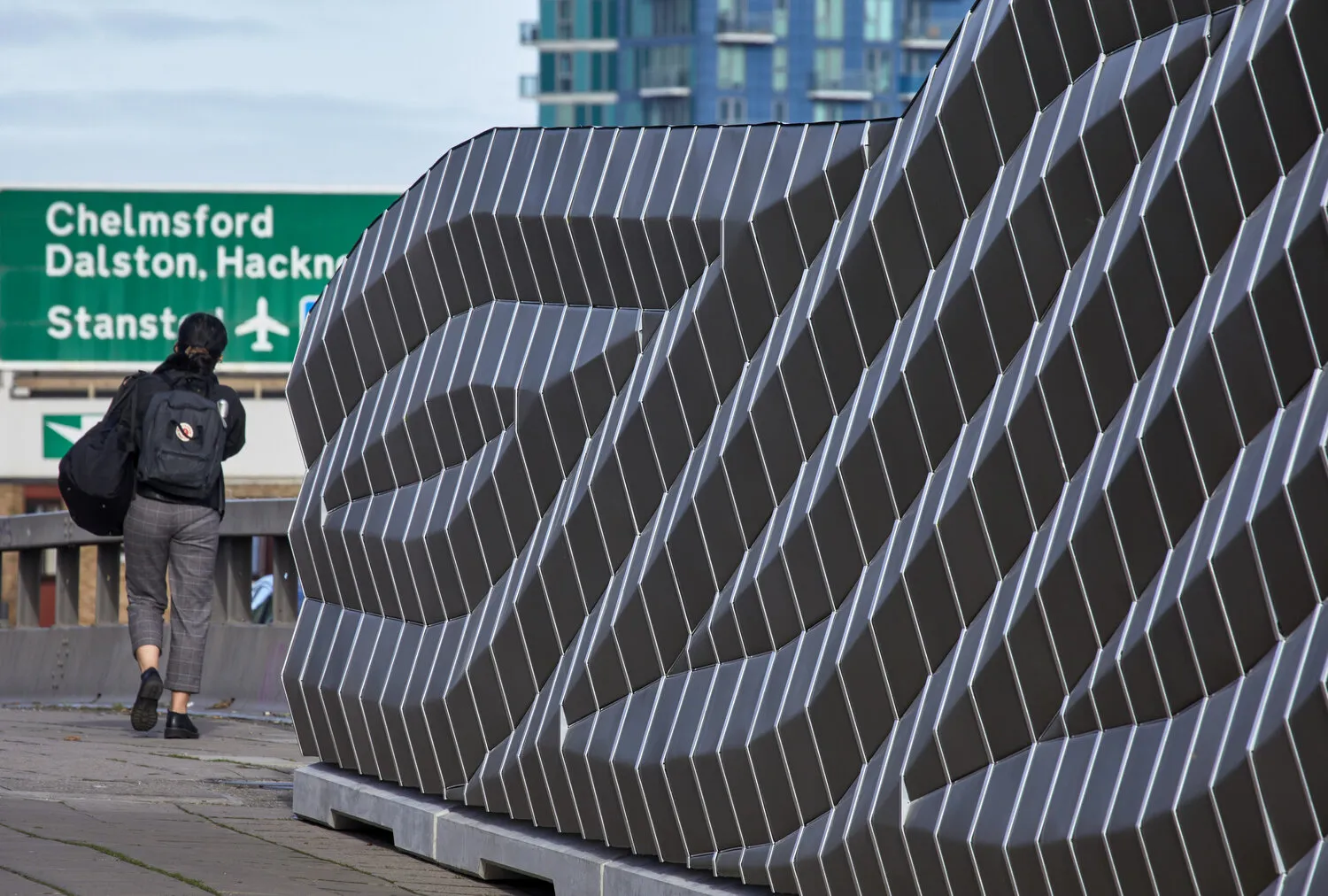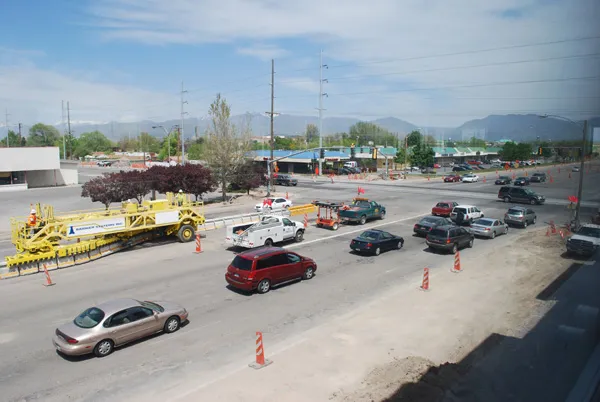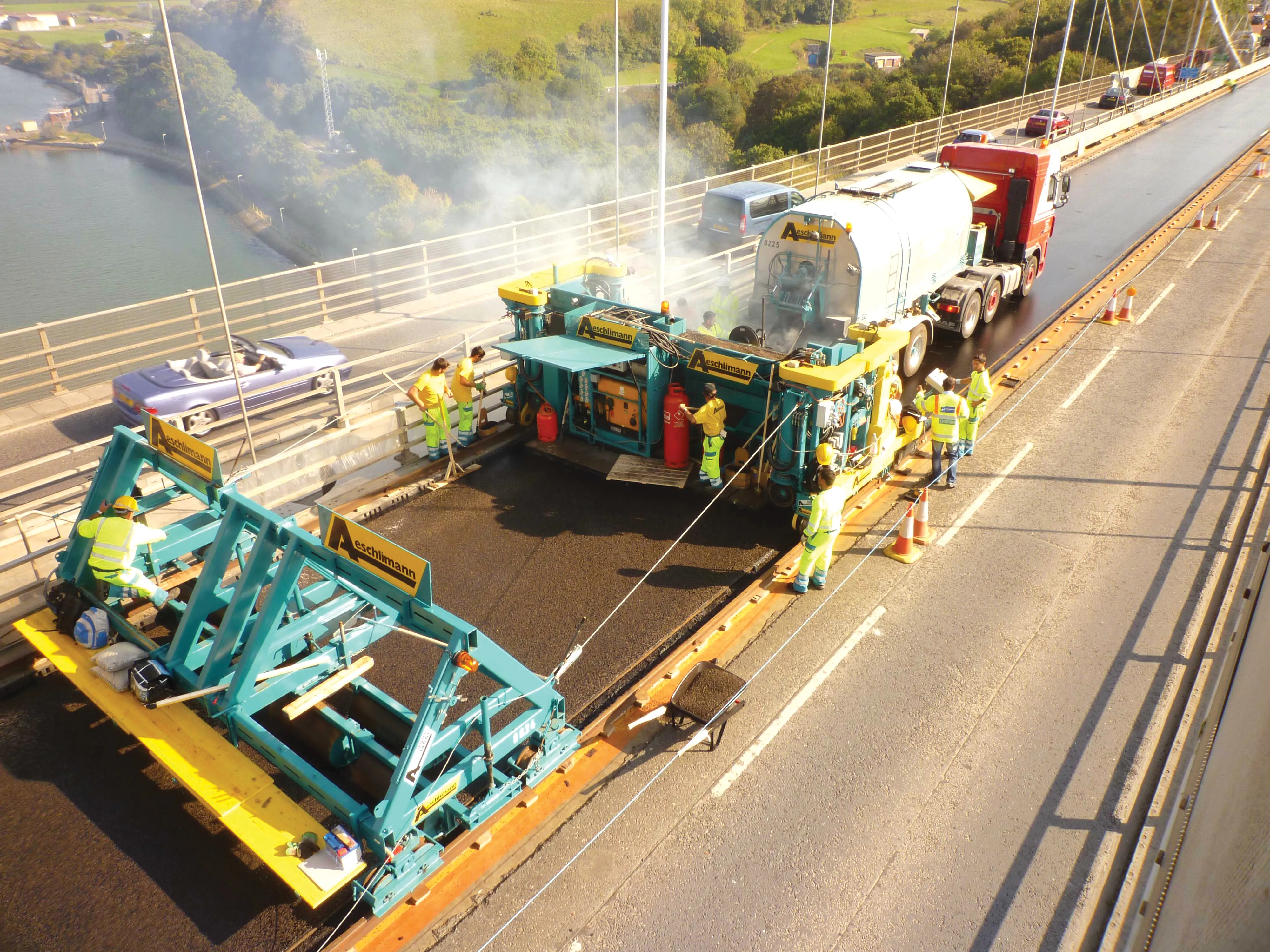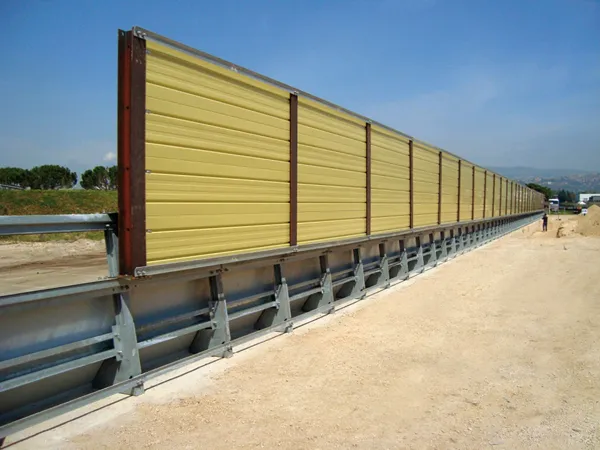
An east London borough is testing an experimental Silk Metal sound barrier close to the busy A12 highway in Bromley-by-Bow.
Noise levels on the A12, which sees more than 15 million vehicles every year, consistently exceed 78dB, as monitored by the nearby University of East London. This puts the A12 in the most severe category for noise pollution, according to the World Health Organisation and the UK’s Department for the Environment. Noise levels are so high, that one local resident said it is impossible to have a conversation with the person next to you or make a phone call.
Work started on the €173,000 project in October. It is an attempt to create public artwork and acoustic shield into one structure, according to Beep Studio which co-led the design and construction team. The installation marks the first UK use of the new type of acoustic panel.
Beep describes the 30m-long metal barrier’s sinuous geometry as folded surfaces and flowing lines. Artistically, the barrier’s reflective material picks up fluctuations in light over the course of the day and accentuates the relatively low relief of the sculpture – only 3m at its tallest.
Most acoustic treatments reduce noise by using soft or textured surfaces to absorb vibrations. The London barrier is made of Silk Metal, a trade mark product. Silk Metal is an aluminium sheet perforated with tiny holes less than 1mm in diameter. The sheet forms the front face of a closed box, called a sealed cassette.
As sound waves hit the sheet it starts to vibrate, forcing air trapped in the box through the perforations. The resulting friction slows the passage of air, which in turn reduces the vibration of the sheet and echoing and reverberating sound.
The barrier is formed from more than 60 sealed cassettes, all of which absorb noise generated by the road through friction, ultimately dissipating this sound energy as heat.
Each cassette in the assembly is linked together into larger groups. These larger groups are then mounted to an articulated concrete footing. These footings require no permanent fix to the highway and can be removed by using a crane.
The shape of every folded aluminium cassette which forms the backbone of the structure is unique. A computer model automatically generated the bespoke cutting patterns needed for each cassette. The simple structural solution designed by Cake Industries enabled the flowing geometry to be generated from laser cut pieces. Careful consideration of adjustability and tolerance allowed these cassettes to be bolted onto concrete footings sitting on the pavement.
The cassettes form a mould that was clad in Silk Metal by craft workers at the Cake Industries factory in south-east London. An extensive series of prototyping and testing was used to prove the concept before the design was signed off for manufacture. The fabrication design and assembly was considered carefully to maximise quality and repeatability. This means that it is now set up for future iterations of the scheme.
Glynn Barton, director of network management at Transport for London, said noise from motor vehicles can have a major impact on people moving through the area. “Our investment in this innovative new noise barrier will make the area a quieter and much more pleasant environment for people walking and cycling along the A12 in Bromley-by-Bow.”
Beep Studio, which won the noise barrier commission through a competitive tender in 2016, noted that noise and pollution levels as well as public attitude towards the artwork aspect are being monitored by the University of East London. Should the project prove successful a larger product roll out is possible, subject to further testing, noted Beep.
Beep Studio worked alongside Expedition Engineering, Cake Industries, Echo Barrier and Power & Line. Project delivery was managed by housing association Poplar HARCA. Funding came from the London Borough of Tower Hamlets and Transport for London.









